2017 Ford Focus RS vs VW Golf R comparison
Volkswagen and Ford have been meddling with hot hatches for decades and now make two of the best. So which...
It’s the humble Golf that has been the primary focus of Volkswagen’s R brand for the past 20 years but things are changing up in this space. There has been a smattering of Rs over the decades; a pacey Passat, an angry Touareg and a Scirocco, one we completely forgot about to be fair. But there’s profit to be made in stamping the R badge on other models, like the Tiguan, now VW’s biggest seller worldwide and we’ll soon see a hi-po T-Roc and the first plug-in R, being a Touareg.
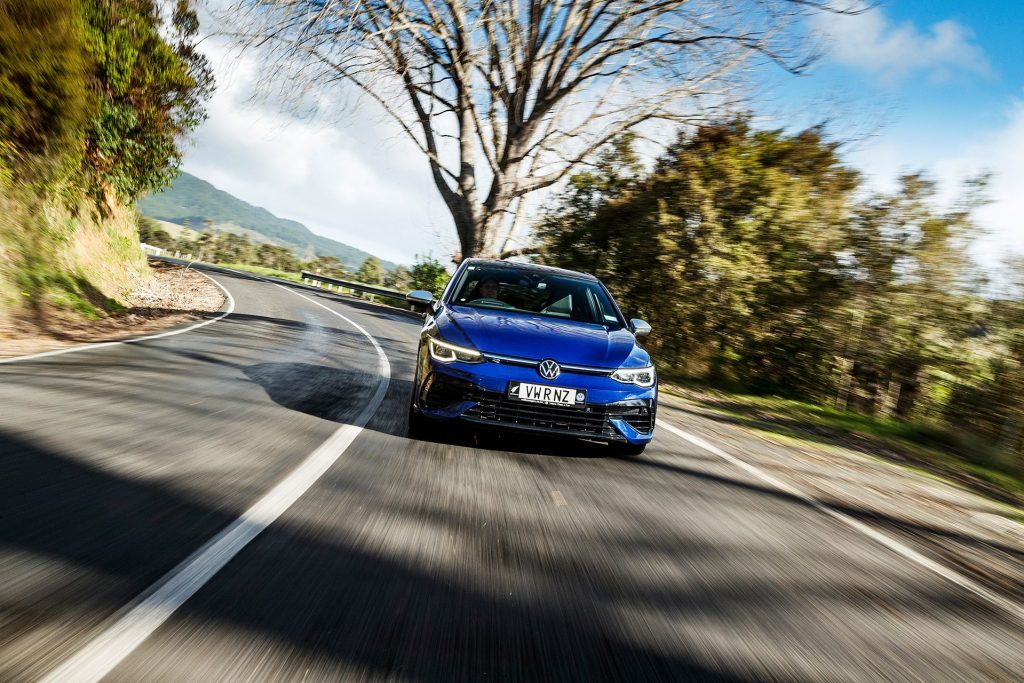
But first up we have the new Golf R (the fifth coming) and the first Tiguan R. These two are fairly similar in a few ways, yet also quite different. They aren’t far apart in terms of the ask, Golf R is now $77,990, while the limited run 1st Edition model is $82,990 (and there’s a $517 CCD fee to pay). The Tiguan R starts at $80,990 (plus $1995 in CCD fees) while the 1st Edition is $85,990. So there is a bit of crossover there but which is the R for you? It really depends where your priorities lie.
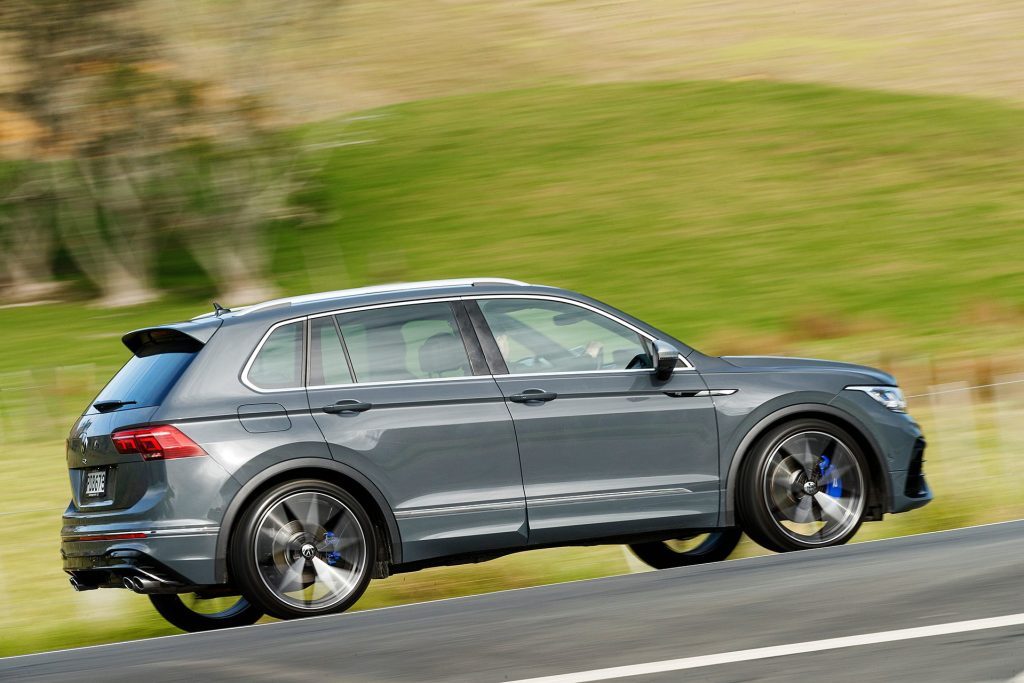
Both use the same 2.0-litre four cylinder, the EA888 now primed to deliver 235kW with 400Nm, the torque coming in at 2000rpm and staying strong to 5600rpm. It’s a good engine this; once on boost it’s almighty responsive and pulls strongly to its power peak at 6500rpm. The generated sound it makes is tolerable and switchable if you really don’t need the extra din. It likes 98 octane (which some are saying could hit $4 a litre in the months ahead) though it will tolerate 95. Imagine paying $200 to fill a Golf! Where’s the I.D R? Or any I.D for that matter…? However, considering the performance on offer, it’s not all that bad; it’s just gas is so bloody expensive. The WLTP3 consumption figure for the Golf is 8.6L/100km (195g/km), the Tiguan rated at 9.7 (220g/km) but somewhere in the 10-12L/100km range is more likely for both.
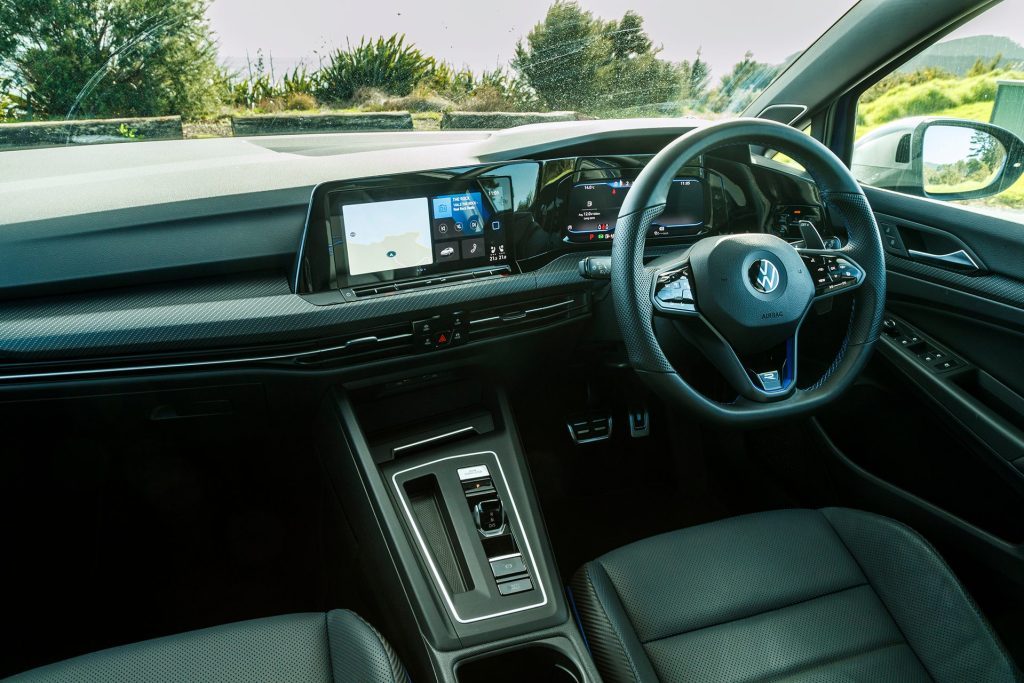
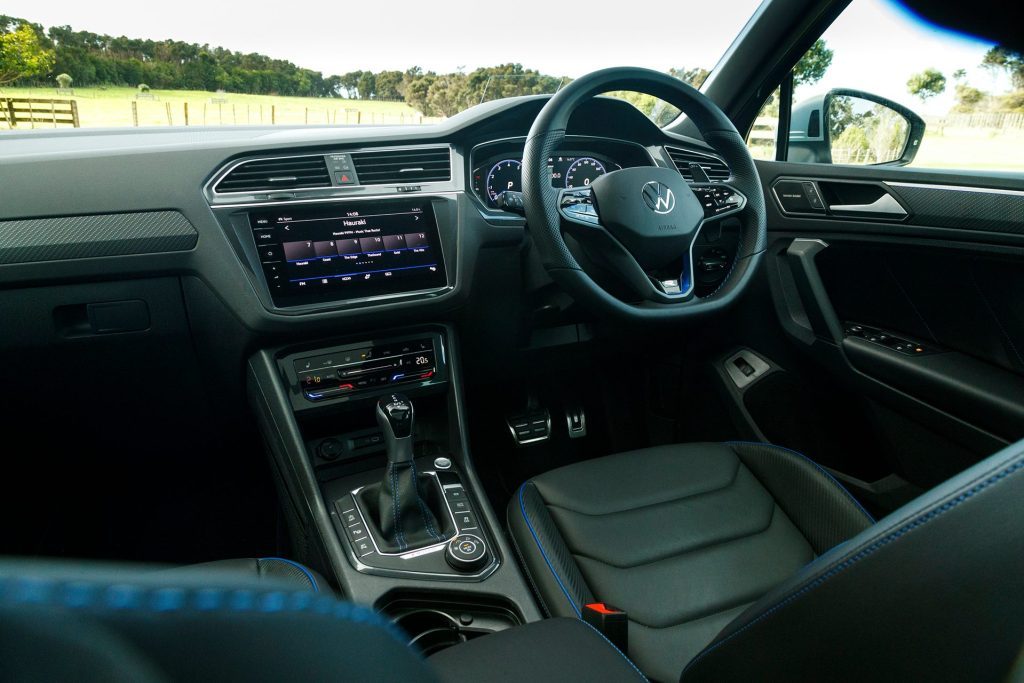
Each uses a seven-speed twin-clutch, which comes loaded with launch control software for added speed off the mark. Activating it isn’t hard, and sends the Golf to 100 in 4.6sec, the Tiguan in 5.1. Those same numbers without using LC are 5.2 and 6.3sec. Weight is the issue for the Tiguan, a claimed 1708kg, to the Golf’s 1520kg.
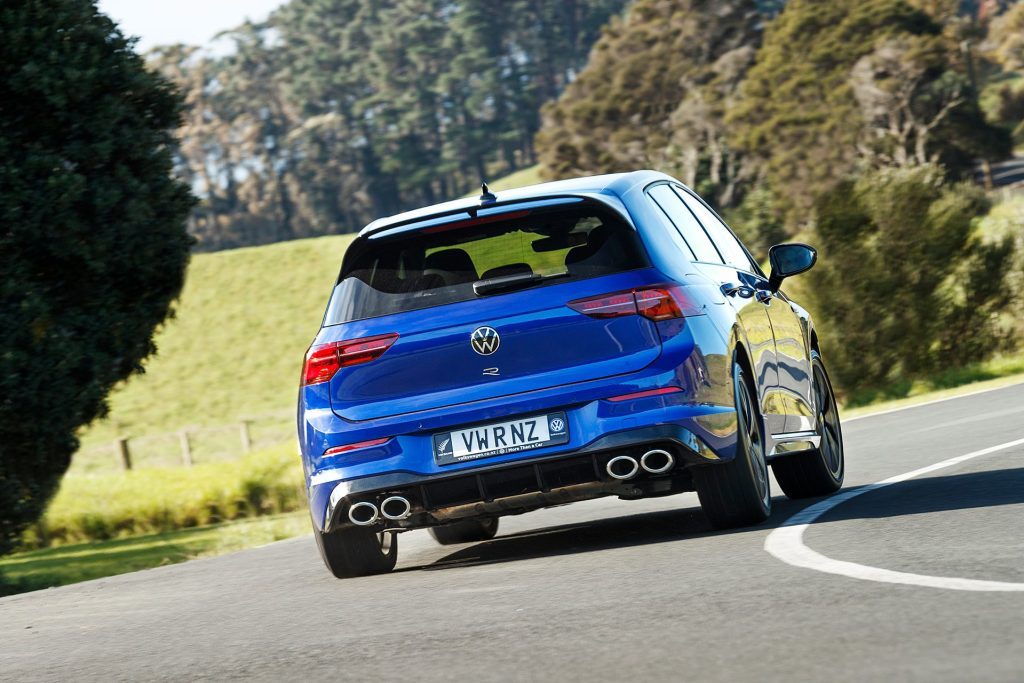
A new torque-splitting rear diff is the biggest advancement for the latest Golf R, and they’ve gifted it to the Tiguan as well. This electromechanical set-up uses a pair of multidisc clutch packs either side of the differential to divide the drive torque between the rear wheels. As much as 100 per cent of the torque can be sent to one wheel if needed. In practice, more drive torque sent to the outside wheel helps push the nose into the corner. Think of it like you’re pushing a shopping trolley, more force from your right hand on the handle has the effect of turning the trolley left. Ultimately it helps stave off understeer and quicken the corner exit.
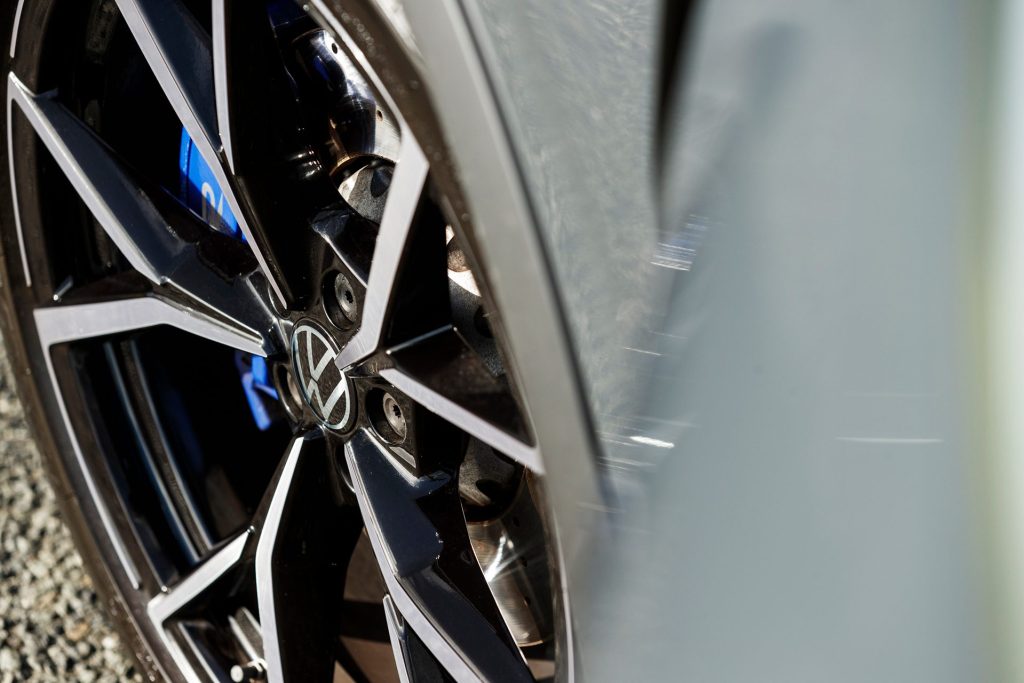
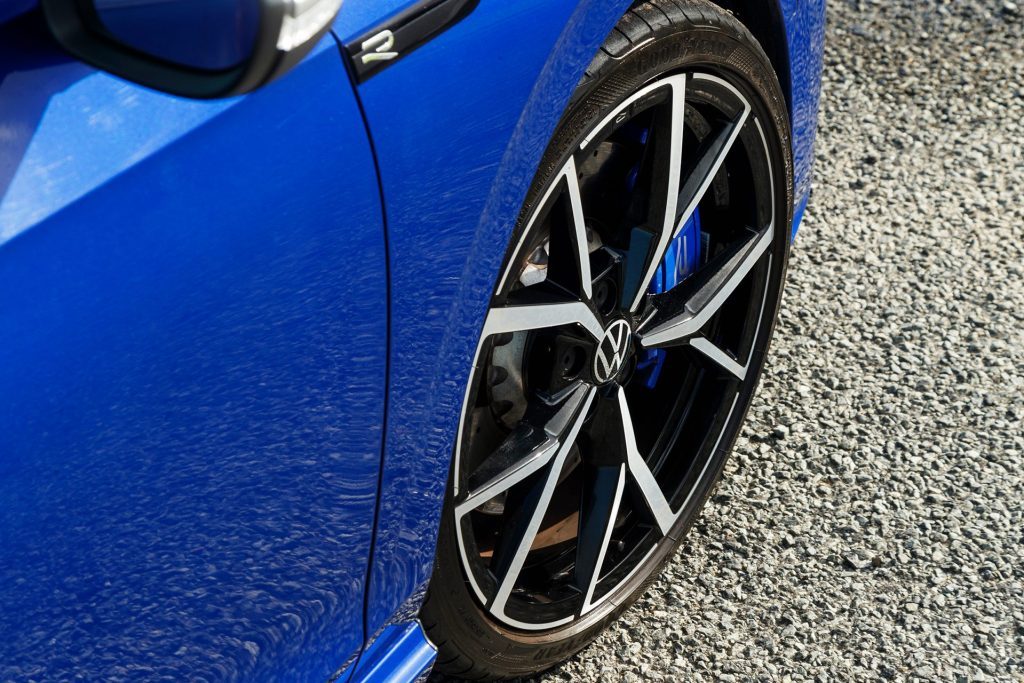
The Tiguan benefits greatly from this and so is able to match the speed of the Golf R through most bends. A bigger contact patch from the wider rubber helps but, compared with the regular Tiguan, the R doesn’t really know the meaning of understeer. However, it does feel a mite staid behind the wheel, too competent for its own good as a result. The R rides 10mm lower than your run of the mill Tiguans, and the adaptive dampers get an R specific tune with spring rates and sway bar tension beefed by 10 per cent. And so the body roll and pitching are well controlled. Along with a stiffer subframe, the steering comes in for a tune up too. This is quick, the turn-in sharp but any sporty connection is lacking.
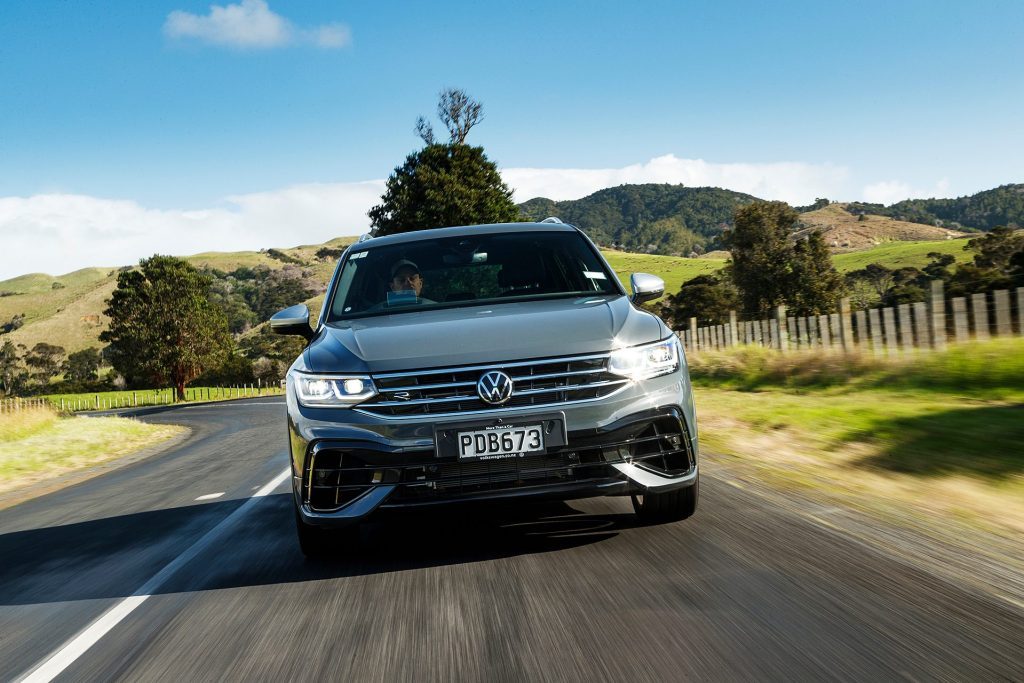
This has various R drive modes, Sport the default with Race and Comfort thrown in. It’s too firm in Race for the road, and while Sport is better it is still quite bumpy. It’s the ride that grates most about the Tiguan R for it’s constantly jiggling about the place.
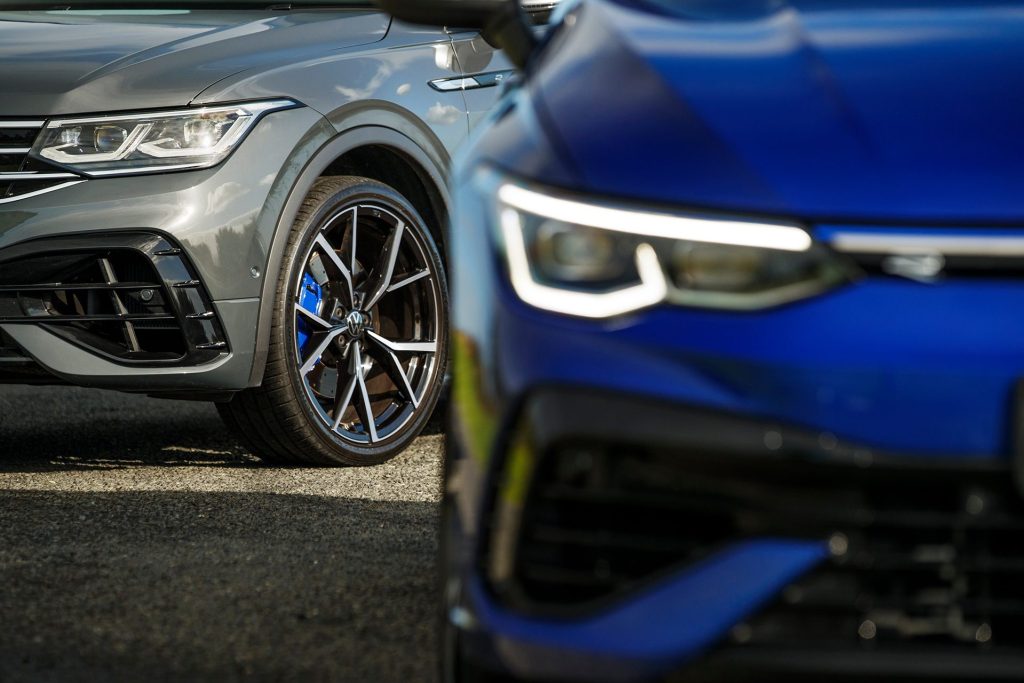
Exacerbating this point is that there are no such issues with the Golf R. It too has had its handling honed; more camber dialled in on the front end, sway bars and springs stiffened and a new subframe and improved mounts for the rear suspension. The adaptive dampers are tweaked while the ‘dynamic manager’, the bit that coordinates all the electrical driving systems, has been further optimised. Hopping out of the Tiguan into the Golf, it all feels much lighter than the 200kg figure would suggest and the progress is surprisingly more supple. It too has the R mode, which feels optimised for ultimate lap time when mere mortals are driving. This new R is said to lap the Ring 7.51mins, where the old slouch took 8.10min. In Race it feels locked down, the electronic aids beavering away to keep it quick, calm and collected. There’s more steering interaction in the Golf, and the brakes have a more reassuring action. These have been up-spec’d too, now with 357mm discs which have an alloy hub for improved heat resistance. There’s also a better electric brake booster that also improves the operation of the ESC.
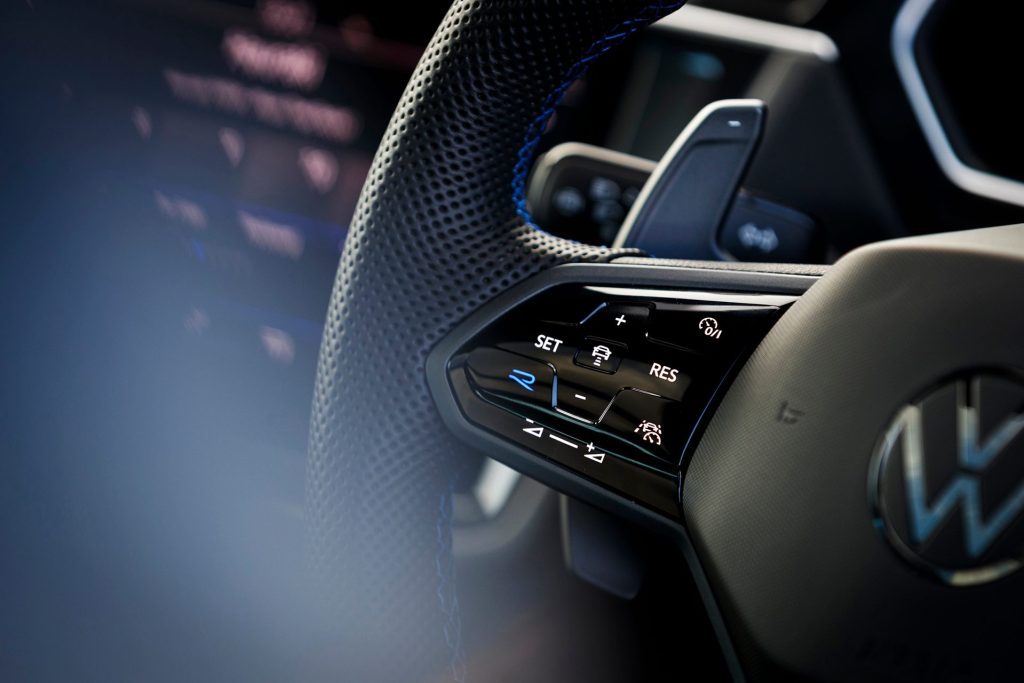
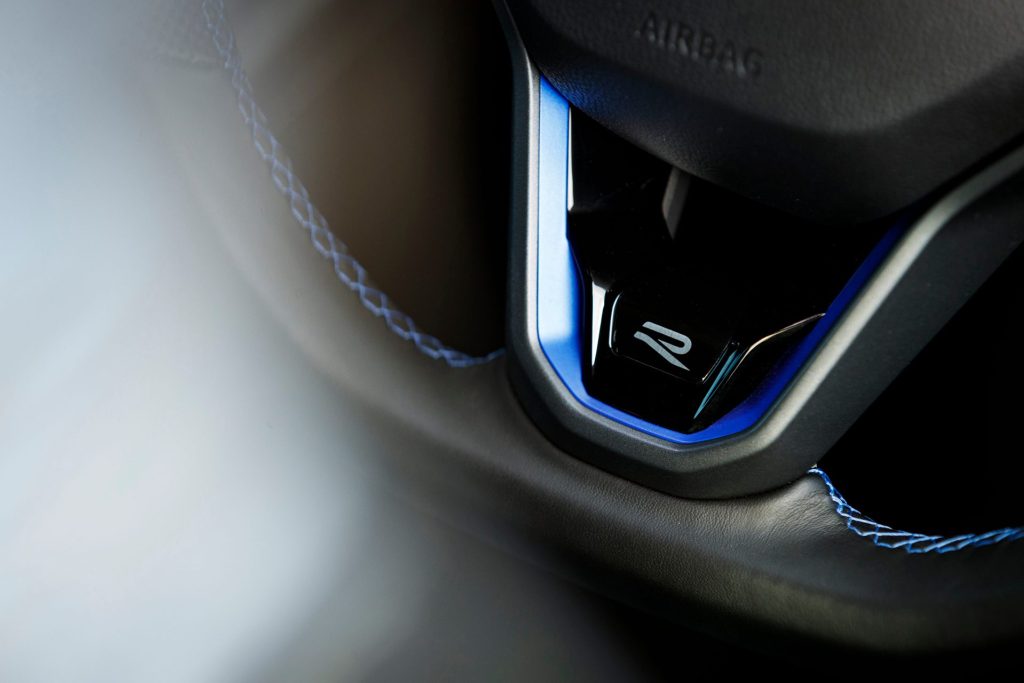
The 1st Edition Golf gains two extensions of the Race mode; Drift and Nurburgring. Unfortunately the former doesn’t magically transform you into a drift god, nor does the R become a tail happy slide merchant. It does highlight how much work the ESC does, as corners taken in this mode generate a heap more tyre squeal and require more judicious throttle and steering inputs. Nurburgring is the best of them, the dampers are backed off, working more cohesively with the road while the ESC is also dialled down; you’re allowed to generate a bit of tyre slip and the steering feels more interactive as you work away to keep it neat. Best of all, the tranny protocols go all Porsche in Sport plus mode; hit the picks and it drops cogs to keep the engine spinning, seeking the most power for a faster corner exit. It’s good fun, and certainly far from a dull drive experience. The Tiguan suffers for its poor ride and that extra weight; it’s not nearly as charming as the Golf, or a Cupra Formentor if you’re after a quick crossover.
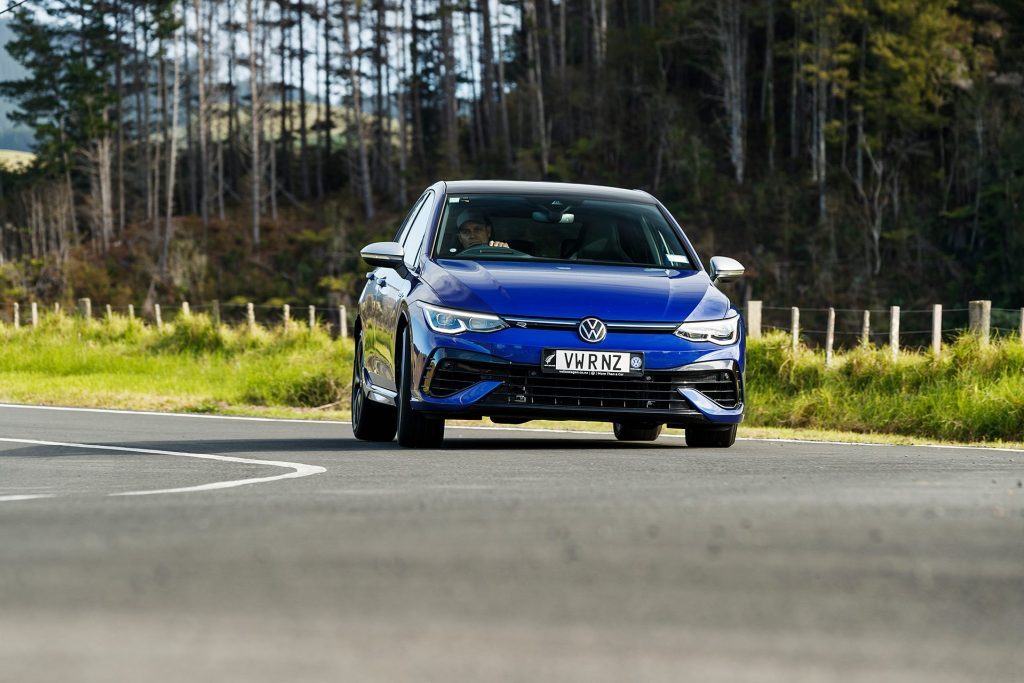
However, it’s the SUV appeal that will tempt people into the Tiguan R. There’s more space in the back seat (rear seat legroom is in short supply in the Golf), and it’s easier to load the kids. The boot space is adequate in the Golf where the Tiguan offers twice as much. And it can tow up to 2200kg, which is 2200 more than the Golf R. The SUV also has a few off road modes for the ski field and beach missions. It’s easier to get into, and the turning circle is the same as the Golf’s while it includes an around view camera and self-parking to make life easy.
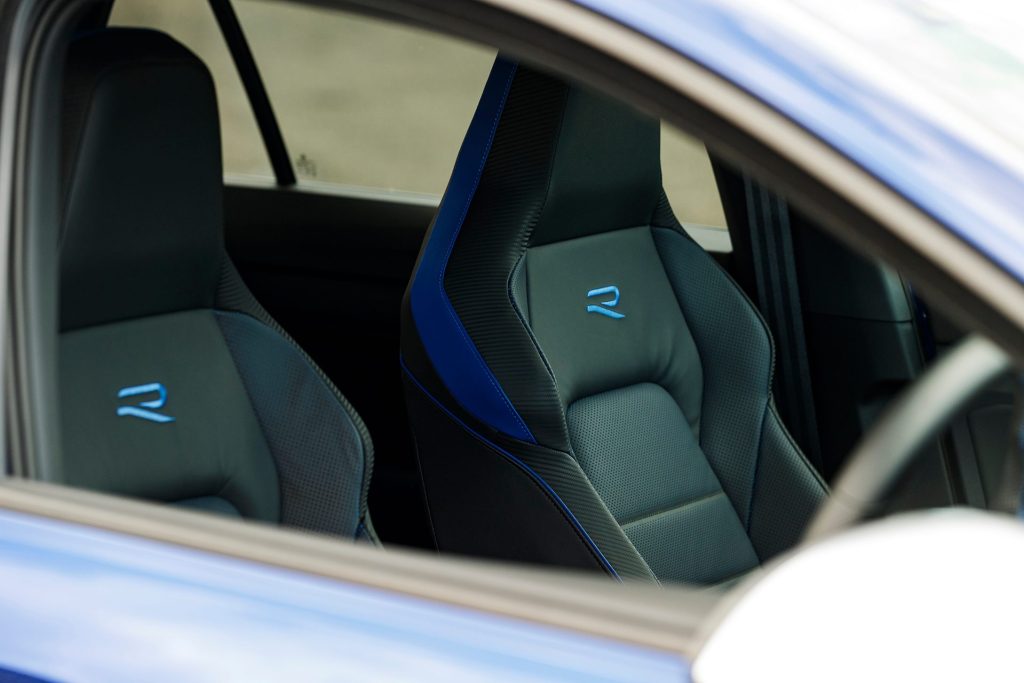
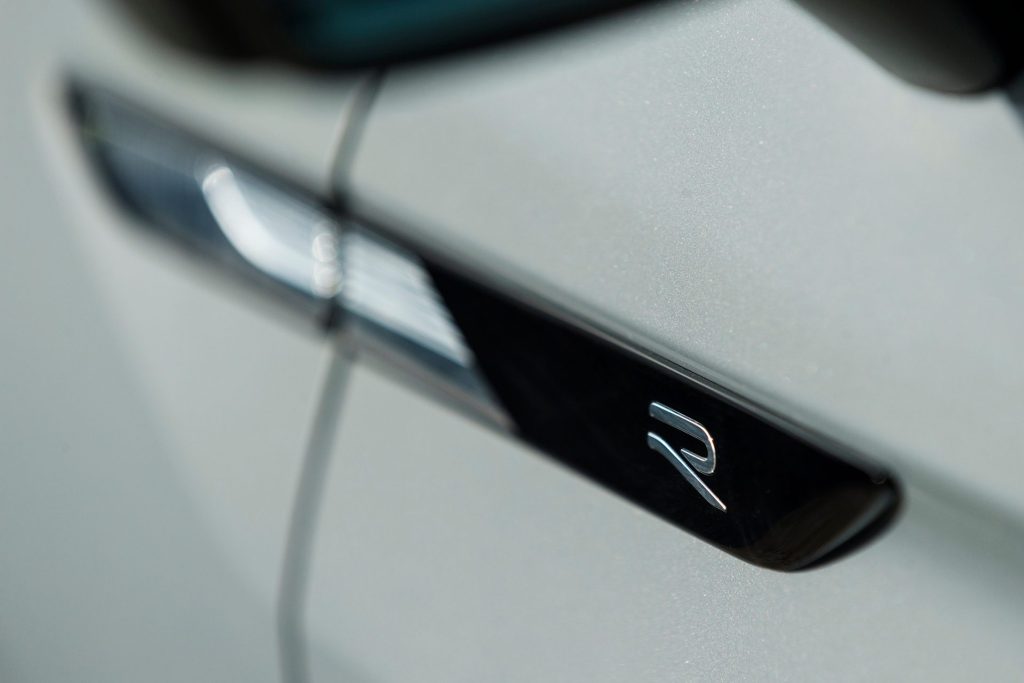
However, the round town ride quality is too edgy in the default Sport, and so is better in the Comfort mode. But then the transmission settles into a rather relaxed shifting protocol. If you’re fussy like us, opt for Individual and configure things to your liking. Both these R models have that occasional twin-clutch married to a turbo hesitation at ambling speeds; it can take a moment to sort the cogs and get it all engaged if you want to go for a gap. And the R engine isn’t fully steaming until it’s got 2000rpm up. With its additional weight, that initial lag is more apparent in the Tiguan. If you’re a bit behind schedule, best select the S mode for the trans, then it goes better.
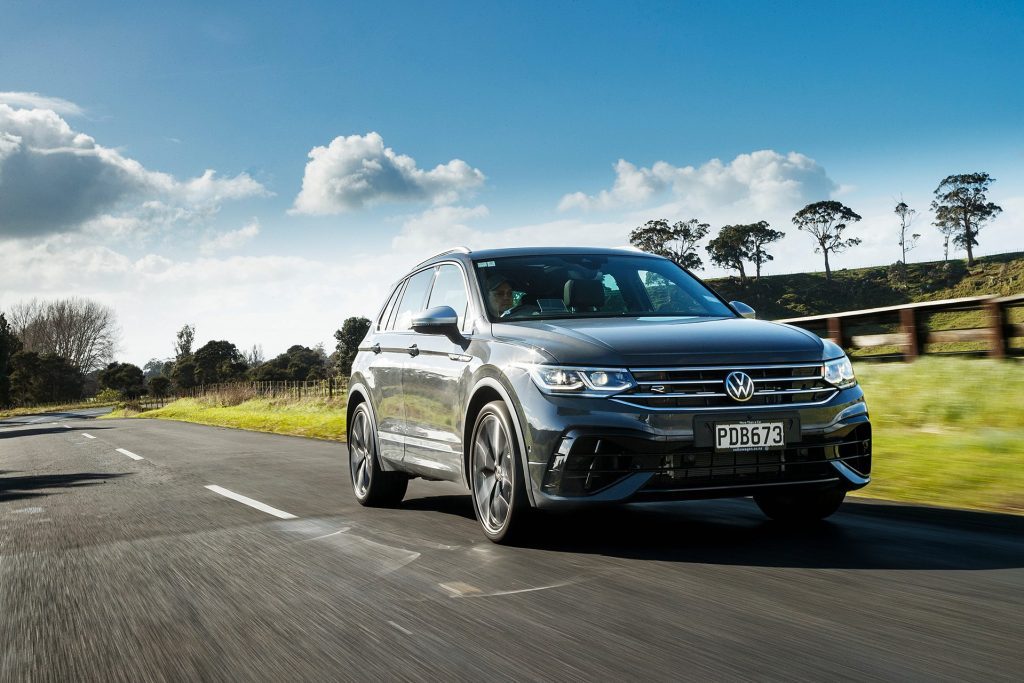
The Golf is pleasantly civilised, the ride supple for a hot hatch. While the turning circle is larger than that in your usual hatchback, the steering is super quick and light at parking speeds. The twin clutch is not too slurry or jerky when manoeuvring around, and the stubby shifter is easy to use too. It’s a Golf afterall, so easy to live with.
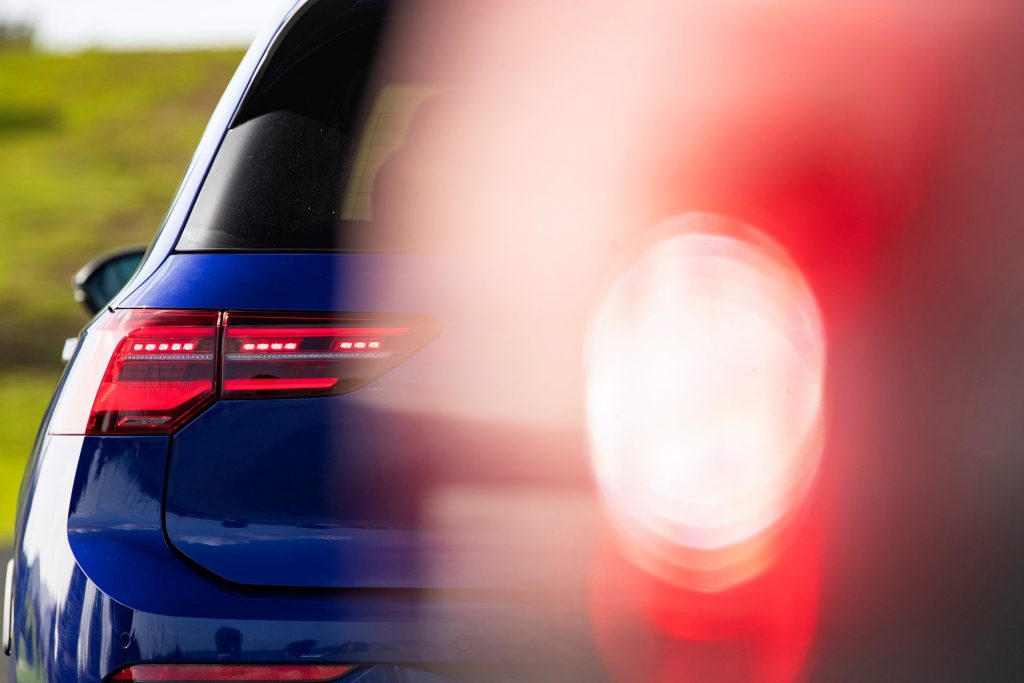
That is once you decipher the code to the infotainment and minor control concept; it’s really not that initiative but you’ll learn. Like where is the windscreen defrost button? Not anywhere near the other climate controls but rather over by the light switches. Of course. It’s all well put together however, and there are more R specific interior bits than in the Tiguan. The just-right sports seats (look good with equally pleasing support) have plentiful adjustment and get both heating and ventilation. The 1st Edition adds fluff like a banging stereo (a woofer under the boot floor taking up luggage space) and a big sunroof, while the Tiguan also adds larger 21-inch wheels. Just watch those when parking as they look rather vulnerable.
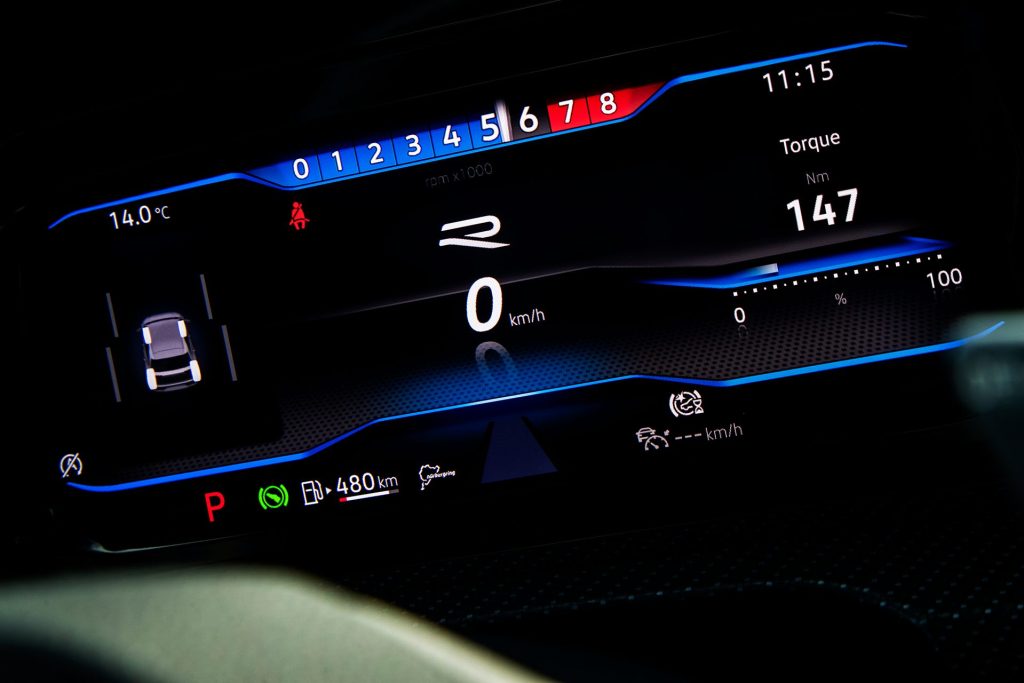
Both have multiple views for their digital dials, the Golf with more race inspired R specific screens. And you can keep tabs on things like G forces and torque distribution, though you should really be keeping your peepers on the road. Helping in that regard, both have the full safety line-up.
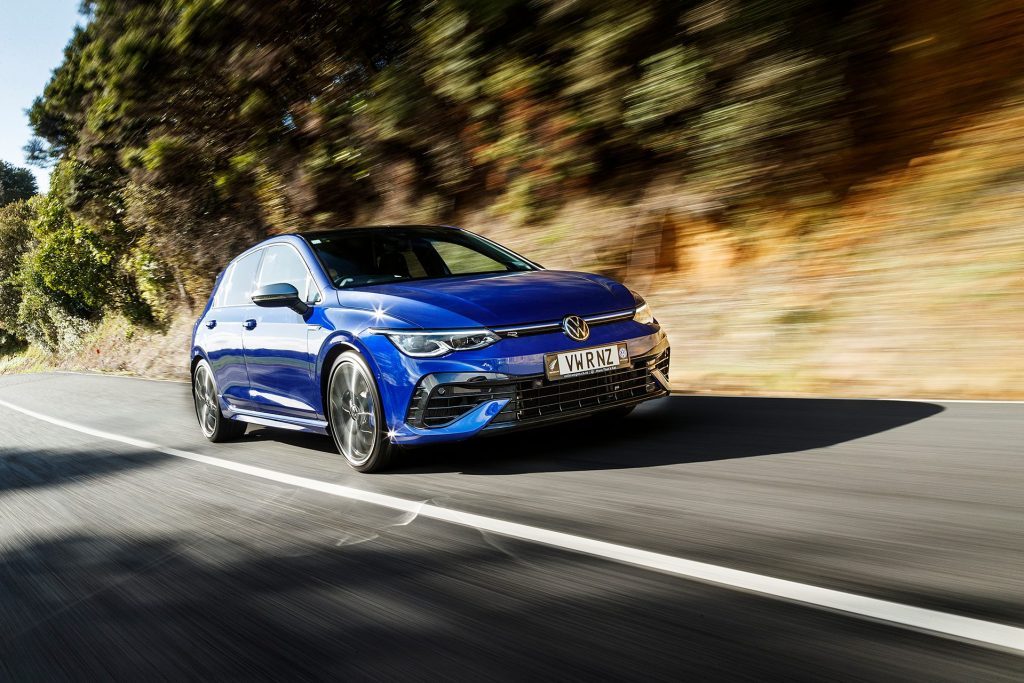
The Tiguan R offers quick and secure handling, looks the part and adds the SUV practicalities to the R badge. Pity about the ride quality though and it falls short of delivering a drive to rival the Golf’s. In the Golf R you have a compelling hot hatch that is easy to life with. With its drive modes and that trick rear diff, it can change its personality to suit your driving desires. It’s pricey compared with the likes of the Focus ST but a bargain when measured against the Audi S3, AMG A 35 and BMW 135i. It’s still the R to covet most.
| Model | VW Golf R 1st Edition |
| Price | $82,990 |
| Clean Car Discount | Fee + $517 |
| Engine | 1984cc, IL4, T, DI |
| Power/Torque | 235kW/400Nm |
| Drivetrain | 7-speed twin clutch, AWD |
| Fuel Use | 8.6L/100km |
| C02 Output | 195g/km |
| 0-100km/h | 4.65sec |
| 80-120km/h | 2.94sec (86m) |
| 100-0km/h | 35.40m |
| Stability systems | ABS, ESP, TV |
| Safety | AEB, ACC, BSM, LDW, RCTA, ALK, AHB |
| Luggage Capacity | 375-1233L |
| Tow rating | Not rated to tow |
| Service intervals | 12 months/15,000km |
| Scheduled servicing | 3 years/45,000km |
| Warranty | 5 years/150,000km |
| ANCAP rating | 5 stars (2019) |
| Weight | 1520kg (claimed) |
| Model | VW TiguanR 1st Edition |
| Price | $85,990 |
| Clean Car Discount | Fee + $1955 |
| Engine | 1984cc, IL4, T, DI |
| Power/Torque | 235kW/400Nm |
| Drivetrain | 7-speed twin clutch, AWD |
| Fuel Use | 9.7L/100km |
| C02 Output | 220g/km |
| 0-100km/h | 5.12sec |
| 80-120km/h | 3.42sec (103m) |
| 100-0km/h | 36.45m |
| Stability systems | ABS, ESP, TV |
| Safety | AEB, ACC, BSM, LDW, RCTA, ALK, AHB |
| Luggage Capacity | 615-1655L |
| Tow rating | 750kg (2200kg braked) |
| Service intervals | 12 months/15,000km |
| Scheduled servicing | 3 years/45,000km |
| Warranty | 5 years/150,000km |
| ANCAP rating | 5 stars (2016) |
| Weight | 1708kg (claimed) |
You may also like…
Volkswagen and Ford have been meddling with hot hatches for decades and now make two of the best. So which...
In what is surely the last round of ICE-powered hot hatch supremacy, Audi has released its RS 3 Sportback, taking...


